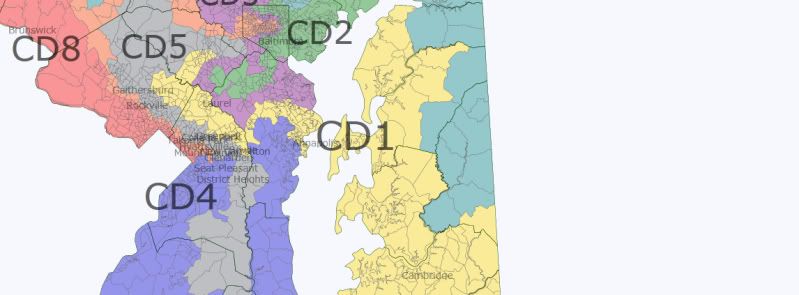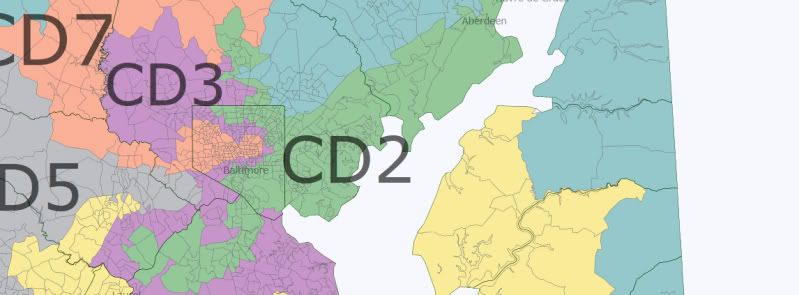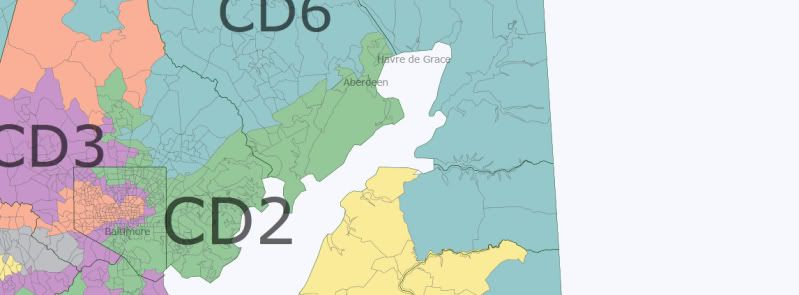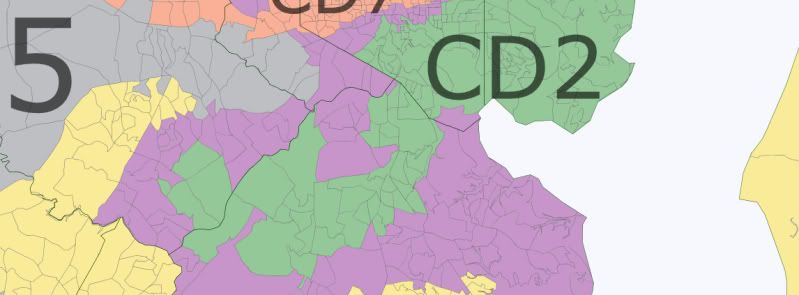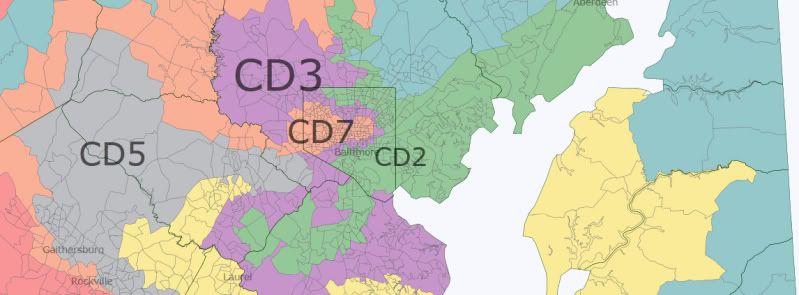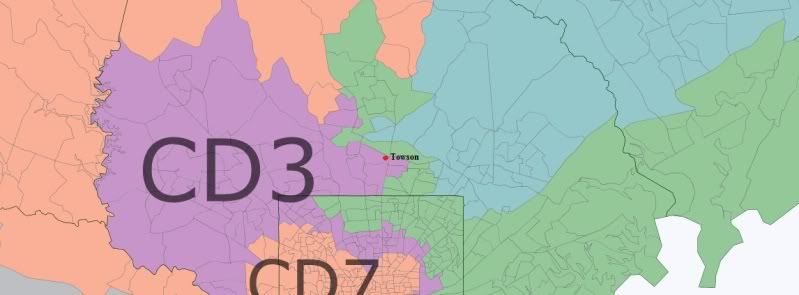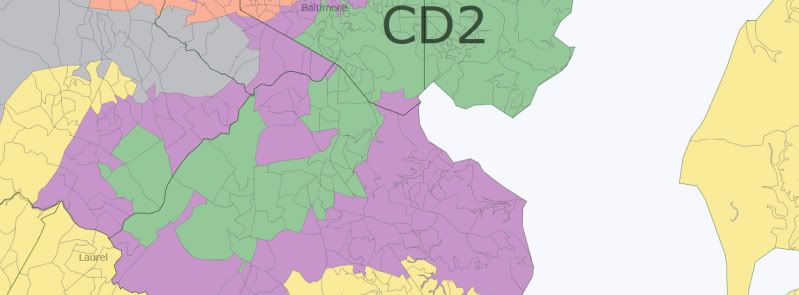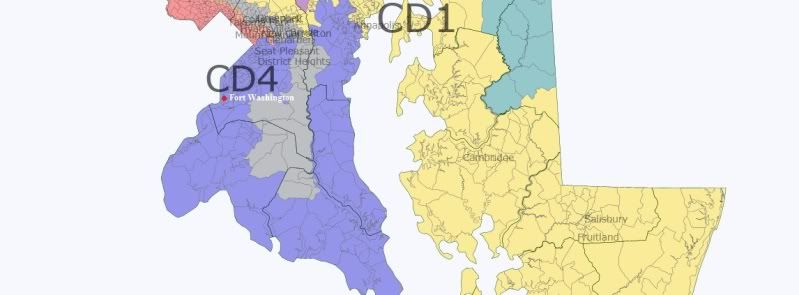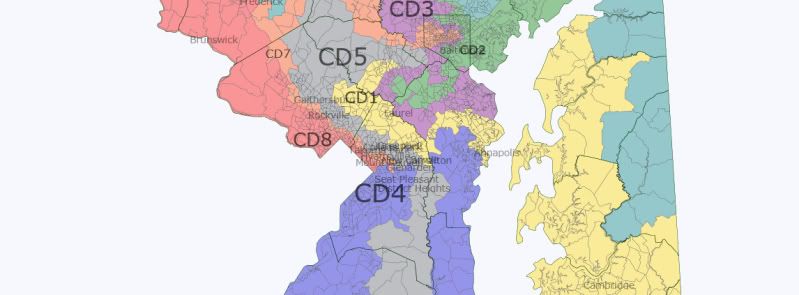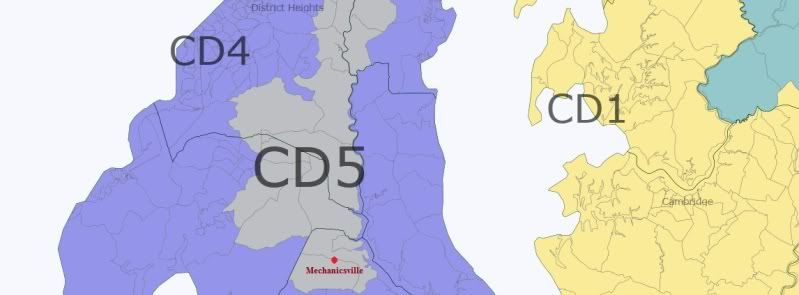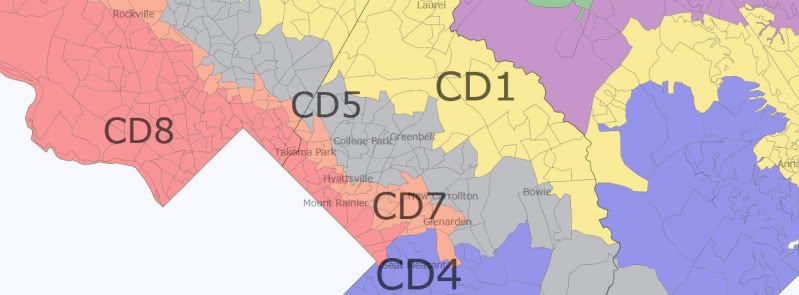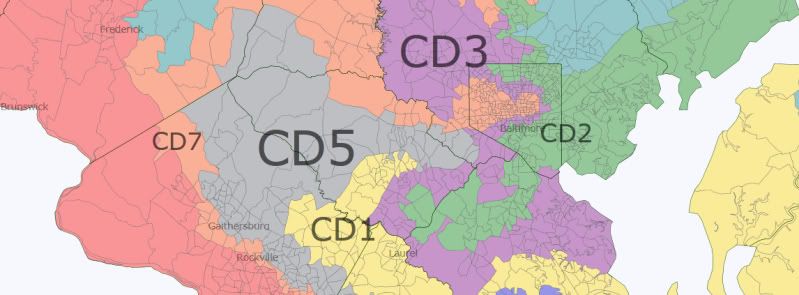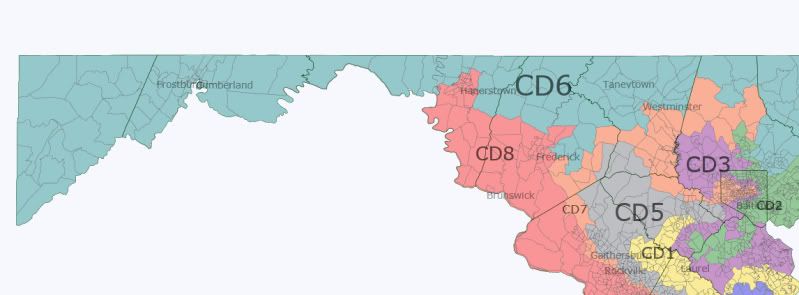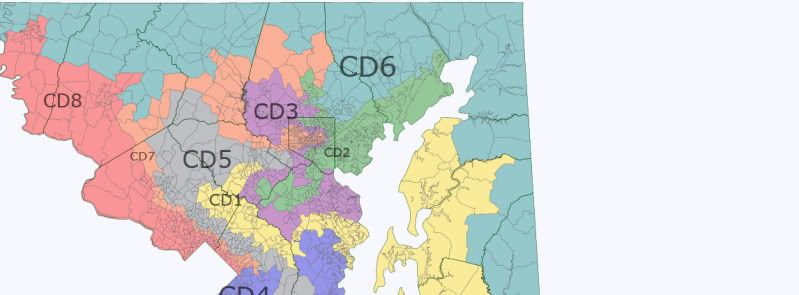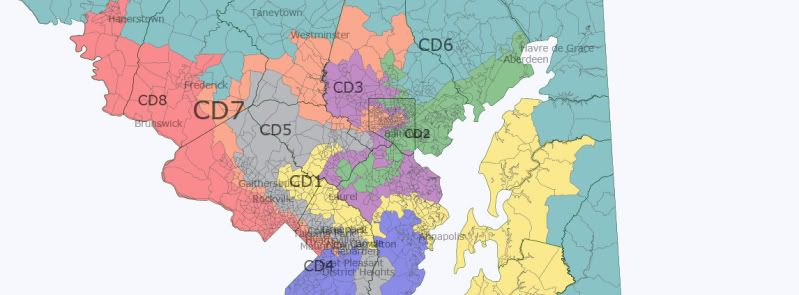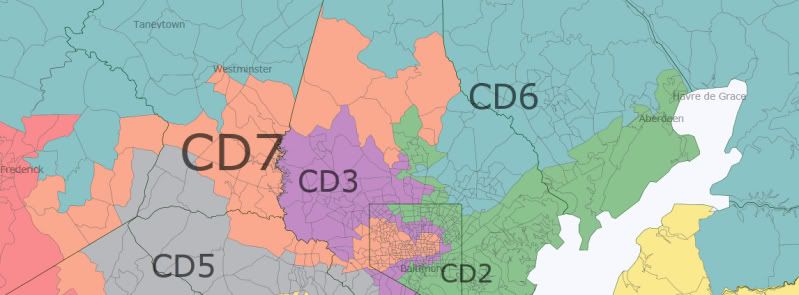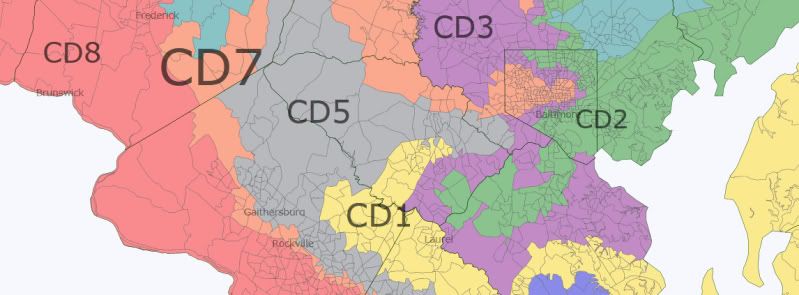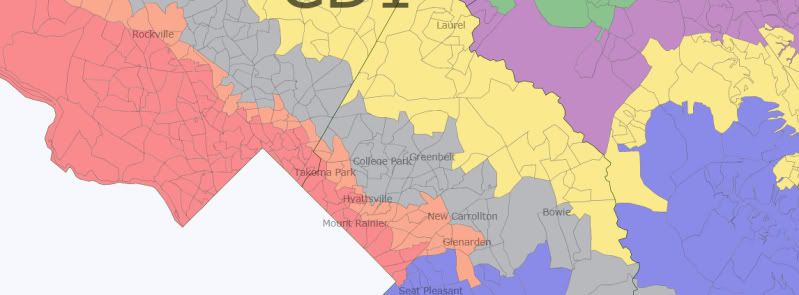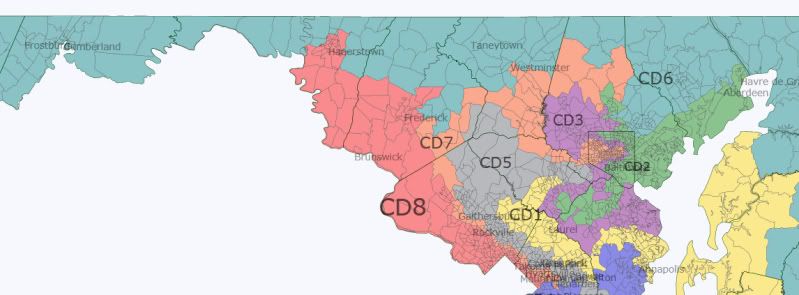Don’t worry – the daily digest isn’t going anywhere. We’re just switching to a morning publishing schedule, so we had to skip today to get us in sync. A piping-fresh DD will be ready for your breakfast consumption tomorrow. In the meantime, you can use this as an open thread for all your heart’s (electoral) desires.
Month: February 2011
FL-Sen: Mason-Dixon Has Bill Nelson (D) Under 50
Mason-Dixon for Ron Sachs Communications (2/9-10, registered voters, March 2010 in parens):
Bill Nelson (D-inc): 41 (35)
Jeb Bush (R): 49 (50)
Undecided: 10Bill Nelson (D-inc): 45
Connie Mack (R): 40
Undecided: 15Bill Nelson (D-inc): 49
George LeMieux (R): 35
Undecided: 16Bill Nelson (D-inc): 48
Mike Haridopolos (R): 27
Undecided: 25Bill Nelson (D-inc): 46
Adam Hasner (R): 24
Undecided: 30
(MoE: ±4%)
I’ve seen better, and I’ve seen worse. Obviously the Jeb Bush numbers are concerning – even though he’s exceedingly unlikely to run – but the trendlines (which are extremely old, and reflect a poll taken at the height of healthcare reform in the news) show some improvement for Nelson. It’s not the amount of improvement that interests me but the fact that improvement is even possible. If the economy picks up, if Barack Obama contests Florida, and if general anti-incumbent-party anger continues to fade, Nelson’s numbers could get better still.
I also like the fact that he isn’t locked into the low 40s. Sometimes you see these really troubling polls where the incumbent is matched up against everyone ranging from Republican Jesus to Some Dude and he gets 40% regardless of his opponent’s name rec. Nelson does better against lesser-known opponents, which to me suggests there are some potential Republican voters who are still willing to give ol’ Nellie a chance. (Note that this squares with something PPP found a few months ago.)
There are a couple of other potential names in the mix that M-D didn’t try – wealthy third-term Rep. Vern Buchanan, and probably-dreaming freshman Rep. Daniel Webster – but I suspect their numbers would look something like those of the two least-known candidates, at the bottom of the list. If you need a refresher, Mike Haridopolos is the state Senate President (and is the only candidate who is actually more-or-less officialy in the race), while Adam Hasner is the former state House Majority Leader.
Another 8-0 Maryland
Here is my take on an 8-0 Maryland. I must thank abgin for this incredible inspiration of using stripe-style gerrymandering (the famous map he did of NY). I employed this technique in reverse – I asked myself, how can I link all of these heavy Dem areas to Republican areas to dilute their votes? I thought of where their votes are concentrated, and the biggest source is Northern Maryland and the Baltimore Suburbs.
So, I set out to link Dem heavy areas to Republican areas in Northern Maryland, and it worked well. The map is not too bad looking, although Ruppersberger and Sarbanes would have trouble fitting into this map, but they can move. Hoyer and Van Hollen would have decent district and maintain a lot of their territory. Barlett and Harris are completely drawn out, and I managed to make two VRA districts that are 51% black, while they take in as many heavy R precincts as possible in Northern Maryland the Baltimore Suburbs so they can leave liberal white areas and other AA areas to shore up other districts.
I wanted the Obama-McCain lean to be roughly 60%-40%, and I did well in that regard, I think only one is 57% Obama and the rest are over 58% Obama, so all districts are around D+5 to D+8, with the VRA districts being more Dem heavy. The only district I think that would be in trouble would be the Eastern Shore based one, but if Kratovil runs, it is his. So, here you go!
Below is the state as a whole. The CDs aren’t numbered well on my map, since I ended up editing a lot, so I’ll just leave the CD numbers off the map and make different numbers.

CD1 in Perriwinkle: Panhandle. Hagerstown, Frederick, Potomac – This district is similar to the ones others have posted to make this district less friendly to Barlett (currently the 6th.) There is no way he would win this district. This has much of Van Hollen’s 8th district, so I would assume he would run here. If he doesn’t live here, the move isn’t far. (Pictures are below)
Obama:59% McCain:40%
White:70% Black:10% Asian:9% Hispanic:8%
CD2 in Grey: Silver Spring and DC burbs extending to Northern Border – The worst thing about this district is that there seems to be no clear incumbent here. Cummings would move to a VRA district, Van Hollen would want the 1st (he could take this if he wants too I guess, his choice) so I suppose this would be a new Democratic Representative. Bartlett could try running here, but I doubt he’d come close. Fairly neat looking district.
Obama:60% McCain:38%
White:61% Black:13% Asian:8% Hispanic:16%

CD3 in Dark Green: College Park, Columbia and the Northern Border – Takes in heavily Dem areas in the DC burbs, through Columbia and then sucks up heavily R areas up north on the border. This district also presents a huge problem for current reps. I guess Ruppersberger may be willing to make the move… Cummings again wouldn’t be here, and there really is no one else who I can see running here.
Obama:59% McCain:39%
White:55% Black:24% Asian:8% Hispanic:11%
CD4 in Green: Eastern DC suburbs stretching to Baltimore Suburbs – The challenge I had with this map in general was diluting suburban Baltimore while keeping two majority black districts. This was one part in solving that problem. I was able to keep this 51% AA while stretching it from heavily AA precincts outside of DC to heavily Republican areas South and East of Baltimore City. This district does take a lot of the AA territory from Donna Edwards current district, MD-4, so she should run here and be safe.
Obama:72% McCain:27%
White:41% Black:51% Asian:2% Hispanic:5%
CD5 in Purple: Southern Maryland to Annapolis– This district pretty much drew itself after the two black majority districts were drawn. I could take remaining AA precincts outside of DC, pull them in with rural more R leaning areas in Southern Maryland, then bring them to Annapolis naturally. Steny Hoyer would have a lot familiar territory, but now he gets Annapolis and AA areas outside of DC instead of areas NE of DC. Still should be a fairly easy hold for him.
Obama:60% McCain:39%
White:62% Black:30% Asian:3% Hispanic:4%


CD6 in Yellow: Northern Baltimore, Baltimore Suburbs, down to liberal areas northeast of DC– One of the nastier districts, this links two areas of Dem strength leftover from other districts – liberal areas between DC and Baltimore, and northern parts of Baltimore itself. I was able to perfectly combine these, while incorporating Baltimore burbs to dilute Republican votes while keeping this district solidly Dem leaning. Maybe Sarbanes would move to this district? Or Ruppersberger? Those two really are the odd men out in general. since their current districts are disgusting. If they want their jobs with this map, they need to move.
Obama:58% McCain:40%
White:63% Black:26% Asian:6% Hispanic:4%
CD7 in Blue: Western Baltimore City, Baltimore Burbs and Rural areas in Northern Maryland. – I had a hard time trying to keep this at 51% black while at the same time sucking up as much anti-Obama votes as possible. To do this I had to find the anti-Obama votes (much like abgin did in NY, where he drew all districts to NYC to find Dem votes.) Once I adopted that strategy, I was able to do the wrap-around kind of districts near Baltimore for CD6 and CD7 in my map. This naturally gave way to making all districts have a north-south orientation in order to dilute Republican strength in Rural North Maryland. Cummings keeps a lot of his old territory in Baltimore, so this district would fit him nicely.
Obama:71% McCain:27%
White:42% Black:51% Asian:3% Hispanic:3%
CD8 in Red: Eastern Shore stretching to Baltimore City– I’m sorry I divided you into 4 pieces, Baltimore. But Kratovil would love this district. It is fairly Democratic, even someone more liberal than Kratovil can win here. But this would be a perfect fit for him. Harris would never win. I did use a tiny, TINY bit of water contiguity near Perryville where the shore meets to mainland in a U-shape (you can kinda see it, its not too bad.) I did this to keep the district from having to take in a couple R-heavy precincts, and the district honestly doesn’t look any worse than any MD district currently.
Obama:57% McCain:42%
White:66% Black:27% Asian:2% Hispanic:3%


SSP Daily Digest: 2/15
• AZ-Sen: A GOP polling firm, Summit Consulting, is out with a poll that gives Maricopa Co. Sheriff Joe Arpaio the lead in the nascent Republican field to replace the retiring Jon Kyl. Arpaio is at 21, with Rep. Jeff Flake and ex-Rep J.D. Hayworth both at 17, ex-Rep. John Shadegg at 12, and Rep. Ben Quayle at 6. An Arpaio-free version found Flake at 22, Hayworth at 20, and Shadegg (who has made clear that he’s not running) at 17. Although this poll wasn’t announced as being on anyone’s behalf, there’s an important caveat: Summit is raising money for Arpaio’s re-election campaign as Sheriff. This seems a consistent pattern for Arpaio over the years: float his name for higher office, rake in contributions, apply those toward his next Sheriff campaign, rinse and repeat. Meanwhile, although previous reports had had him unlikely to run for Senate, Rep. Trent Franks from current AZ-02 is now on the record as “exploring that option.”
• ME-Sen: Here’s an amusing tidbit about Andrew Ian Dodge, now running a tea party challenge of sorts to Olympia Snowe: he’s the subject of some suspicion in certain right-wing circles on account of his British background (which may explain why he cheekily showed up with his birth certificate at his campaign launch). Prime evidence for this strange line of attack is a comment he posted to a blog several years ago where he copped to being a Lord of the Manor in Gorleston, Suffolk. (Politico’s Dave Catanese titled his article on this “Snowe challenger is a British Lord…” which isn’t quite right. “Lord of the Manor” isn’t part of the peerage system (which just plain old “Lord” would be), but just a weird holdover from the feudal system of property rights, an indicator that someone in his family owned property there long ago). (One other thing I noted, though, thanks to the magic of Wikipedia: Gorleston is actually in Norfolk, not Suffolk. WHAT ELSE IS ANDREW IAN DODGE LYING ABOUT!!!!11!!!?!)
• NE-Sen: We’ve mentioned state Sen. Deb Fischer before as a potential dark-horse candidate on the Republican side in Nebraska, and now she seems to be stepping things up, at least to the extent of contacting Roll Call and letting them know that she’s interested. She represents the empty north-central part of the state, and could stand out as an interesting third-wheel in a Jon Bruning/Don Stenberg rumble by being the only rural and female candidate.
• NM-Sen: PPP finally released the GOP primary portion of last week’s New Mexico Senate poll, and… common theme in a lot of their polls… find the most electable candidate for the general losing the GOP primary because of various apostasies. Libertarian-flavored ex-Gov. Gary Johnson trails ex-Rep. Heather Wilson in a hypothetical 3-way, 35-27, with Rep. Steve Pearce at 17, Matt Chandler and Dianna Duran both at 6, and John Sanchez at 4. (Not that it matters, since Johnson has confirmed he’s sticking with his long-shot presidential bid. In fact, unless Jeff Bingaman unexpectedly retires, I’d be surprised if any of these GOPers bothers to get in.)
• NV-Sen: Rep. Dean Heller is out with an internal poll that has him way ahead of John Ensign in the GOP primary, and, accordingly, he seems to be accelerating his plans to run. The poll gives Heller a 53-38 lead in a head-to-head, and also sees him winning a 5-car pileup: it’s Heller 39, Ensign 23, Danny Tarkanian 17, Sharron Angle 14, and John Chachas 3. Faced with the possibility of a much harder race against Heller than Ensign, possible Dem candidate Rep. Shelley Berkley is saying that it wouldn’t dissuade her if Heller were the nominee, but she’s continuing to “seriously look at” the race but is also in “no rush” to decide. You know who is in a rush, though? The DSCC. Jon Ralston says they’re already talking to Democratic SoS Ross Miller too, in case they need a Plan B.
• TX-Sen: Hmm, here’s an interesting place for a Senate scoop to come from: the student newspaper at Claremont McKenna College in California. CMC alum Rep. David Dreier is the linchpin in this game of telephone: he told them that a fellow alum is indeed running for the Senate, and by process of elimination, that would point to former Dallas mayor Tom Leppert, considered a likely candidate on the GOP side. Leppert, however, wouldn’t confirm to the student paper that he was running.
• UT-Sen: Another Dan Jones poll in Utah takes a look at the Senate race, and this one isn’t as weird as the last one (which included Jon Huntsman, who seems, to my eyes, to be running for Vice-President instead): it’s a straightforward poll of Orrin Hatch vs. Jason Chaffetz (although it’s still a poll of all Utah residents). At any rate, Hatch leads Chaffetz 44-34; among self-identified Republicans, Hatch actually does better, 51-35 (although trailing among “very conservative” voters). Of course, there are various ways this primary might still not happen; Chaffetz could break 60% at the state GOP convention, or Hatch could (a la Bob Bennett) finish third at the convention behind Chaffetz and a teabagger to be named later. Asked for comment, Chaffetz only said he’s a “definite maybe” about the race, and may choose to stay in the House.
• VA-Sen: We might have an answer pretty soon on whether Tim Kaine plans to run for the Senate, now that Jim Webb is out. He reportedly will consult with Barack Obama on the matter in the next couple days (gee, I wonder what Obama will suggest?), and Kaine also has announced plans to speak at the state’s Jefferson-Jackson Dinner this weekend, which seems like a place to make a ‘yes’ announcement (as it would be kind of a buzzkill to go there and tell everyone ‘no’). There are also rumors… poorly sourced ones at that, so don’t get your hopes too high… out there of a GOP-sponsored poll showing not just Kaine but also Tom Perriello leading George Allen, so keep your ears to the ground for more on that.
• MT-Gov: Add one more state Senator to the mix in the Montana gubernatorial race, this time on the Dem side. Larry Jent says he’d like to run statewide, and it’ll probably be for governor. (He’d join other current or former state Sens. Dave Wanzenried on the Dem side, and Corey Stapleton and Ken Miller for the GOP.)
• LA-03, LA-07: Two Louisiana papers have had articles in the last few days on Louisiana redistricting and its likeliest casualty, new Rep. Jeff Landry, who was elected with tea party rather than establishment backing and, accordingly, doesn’t have much of a leg to stand on when the establishment draws the maps in the coming months. It’s looking likelier that a map more favorable to the more senior (and tighter with leadership) Rep. Charles Boustany will be the result. The state’s redistricting special session of the legislature will be held Mar. 20.
• NY-15: While there’s still plenty of time left for him to reverse course and announce his retirement (hint, hint), Charles Rangel yesterday announced that he’s filing for re-election in 2012 to a 22nd term.
• NY-26: While they’ve been downplaying their chances for success in the R+6 26th, local Dems are hard at work looking for a candidate. It’s hard to tell who’s on the short list right now, though: one list featured Erie Co. Comptroller Mark Poloncarz, Erie Co. Clerk Kathy Hochul, and Amherst town board member Mark Manna (the only one who actually lives in the district), but doesn’t seem to feature oft-mentioned Kathy Konst. Another insider mentions two possible Dems Republican candidates from the private sector: Dan Humiston and Chris Jacobs. There’s one familiar face you can scratch off the Dem list, though: 2008 candidate Jon Powers says he’s not looking to be considered.
• WA-02: Snohomish Co. Councilor and narrow 2010 loser John Koster is “weighing” another run against Rick Larsen, although he’s waiting to see what the 2nd looks like after redistricting. The 2nd (currently D+3) needs to lose population, but it could become swingier if the losses come around Everett, or become bluer if the losses come in eastern Snohomish County.
• Chicago mayor: One more new poll to report in Chicago, another one from We Ask America (on behalf of the Chicago Retail Merchants Association). It has the highest Rahm Emanuel number yet, at 58. Gery Chico is 2nd at 24, Miguel del Valle at 10, and Carol Moseley Braun at 6. The poll was in the field on Sunday, the same day that Moseley Braun, apparently by way of referring to The Producers, compared Emanuel to Hitler, so the impact of her latest gaffe may not even have impacted on this sample. (Given the current trajectory of her poll numbers, she may actually receive a negative number of votes at the actual election on Feb. 22.)
• Special elections: There are not one but two special elections for vacant state Senate seats in California tonight, although neither one should offer much drama thanks to their strong partisan leans. The one you’re probably already aware of is SD-28 in the LA’s South Bay suburbs (overlapping much of CA-36), where Democratic ex-Assemblyman Ted Lieu is likely to fill the seat left by the death of Jenny Oropeza. He faces seven other candidates, so he might not break 50%, requiring a runoff then. The other race is in SD-17, centered on Lancaster in the high desert north of LA, where Republican Sharon Runner is expected to beat the only other candidate, Democrat Darren Parker. (Runner is trying to take over the seat from her husband George Runner, who vacated to join the state Board of Equalization.)
• Nebraska: Believe it or not, there are multiple interesting things afoot in Nebraska. Most significantly, the proposal to switch Nebraska to a winner-take-all allocation of electoral votes (instead of allotting some by CD, which allowed Barack Obama to sneak away with 1 Omaha-area EV) is entering committee; it’s expected to be easily approved by the ostensibly nonpartisan but Republican-controlled unicameral legislature. There are also competing bills in the legislature on changing the size of said legislature, one to reduce it from 49 to 45, the other to expand it to 50 (neither one is expected to go anywhere, though). Also, Nebraska just picked its nine members for its redistricting commission; there will be five Republicans and four Dems on the (again, ostensibly nonpartisan) body.
• WATN?: Ex-Rep. Mike Arcuri, who lost in NY-24 in November, is now working in the private sector at a major law firm in Syracuse. It may be a tea leaf that he might be interested in another run that he’s staying in the area instead of heading for the more lucrative world of K St., or it might be nothing. At any rate, he’s doing better for himself than Republican 2006 CA-47 loser Tan Nguyen, who just got sentenced to one year and one day in federal prison for obstruction of justice related to charges of voter fraud, for sending out flyers intended to suppress the district’s Latino vote.
• Polltopia: If you think that polling was way screwier than usual over the 2010 cycle, or that it was better than ever, you’re both wrong. It was pretty much the same as always, according to Mark Blumenthal. According to a study by National Council on Public Polls, the average candidate error in 2010 was 2.1%, very comparable to other midterm elections. (The accuracy seems to improve in presidential years, perhaps thanks to more frequent polling.) Interestingly, though, even though the error rate didn’t change much, there were many more polls (25% this cycle, compared with 11% in 2006) conducted in the last week before the election with results that fell outside the margin of error (cough Rasmussen cough). They found that live interview polls (2.4%) did slightly better than autodialed polls (2.6%), but, surprisingly, polls conducted over the internet (mostly just YouGov) did the best with a 1.7% error rate.
CA-36: Debra Bowen Reportedly to Enter Special Election
Politico’s Dave Catanese reports:
California Secretary of State Debra Bowen will announce Tuesday that she is joining the race to succeed former Democratic Rep. Jane Harman, according to a source close to Bowen.
Bowen joins Los Angeles City Councilwoman Janice Hahn in the race. Hahn, whose family is extremely well-connected in L.A. politics (her brother was once mayor), has been rolling out tons of endorsements in just the few days since she announced her candidacy. She now has the support of current mayor Antonio Villaraigosa (the guy who beat her brother), NBA legend Magic Johnson, and Sen. Diane Feinstein. However, Hahn’s electoral track-record has some bruises: She got crushed by Gavin Newsom in the Democratic primary for Lt. Gov. last year, and in 1998, she lost an open-seat race for this same seat to Republican Steve Kuykendall. (Al Gore won this district, which was later made bluer, by a 51-44 margin.)
But Bowen’s hesitancy in jumping in may have cost her, with large chunks of the local establishment already getting behind Hahn. Still, Bowen will have considerable resources of her own to bring to this contest. And because of California’s move to a “top-two” system (all candidates from all parties run together in a single “jungle” primary, with the top two vote-getters moving to a run-off, regardless of party, unless someone gets 50% in the first round), and because the Republican bench in this area is thin, we could potentially see an election decided in the end between two heavyweight Democrats.
UPDATE: Marcy Winograd is still mulling things over:
Marcy Winograd has said she wants to talk to Secretary of State Debra Bowen about her foreign policy positions before she decides whether she’ll also get into the special election in California’s 36th District. And so far, she’s still waiting.
The progressive activist who twice challenged Rep. Jane Harman (D-Calif.) in the Democratic primary said she’s emailed Bowen to try to talk and get answers to her questions on Bowen’s foreign policy positions. But as Bowen is launching her candidacy Tuesday, the two have yet to connect. Winograd has spoken with Bowen’s consultant Steve Barkan, and last Thursday Bowen left a message on Winograd’s answering machine, saying she was still researching some of the issues. Winograd emailed her again after that, but hasn’t heard back.
Winograd told Hotline On Call her chief concerns are whether a Rep. Bowen would join the Out of Afghanistan Caucus and the Progressive Caucus in the House and whether she’d be willing to lead a peace delegation to Palestine.
UPDATE 2: Bowen makes it official. (Hat-tip: jpmassar)
Redistricting California (Part 1): U.S. House
Here is my attempt at redistricting California’s U.S. House seats, following the commission’s goal of communities of interest as closely as I could. I included each incumbent’s name in roughly which district they’d end up in as a result of this redistricting. I was just not sure where Jerry Lewis would go, and many of the other SoCal reps were rough estimates.
Here are the numbers I ended up with when I finished. (Something odd I noticed in DRA was that when I colored in one block, blocks miles away were also colored in with that same color, like you can see in CA-16 with the color for CA-14.)
Safe Dem: 26
Likely Dem: 5
Lean Dem: 5
Toss-Up: 5
Lean GOP: 2
Likely GOP: 3
Safe GOP: 7
White-majority: 24
Hispanic-majority: 10
Black-majority: 1
Majority-minority with no one majority race: 18 (including the 2 districts that are 50% white; I wasn’t sure if they were 50.1-50.4% or 49.6-49.9%)
Here are the maps and descriptions of each district.
Outer NorCal
CA-01: North Coast + most of Solano County (Mike Thompson (D))
Demographics: 68% White, 17% Hispanic, 5% Black
2008 President: Obama 62%, McCain 36% (SAFE DEM: D+9)
CA-02: Northern Mountain south to Nevada County (Wally Herger)
Demographics: 82% White, 9% Hispanic
2008 President: McCain 53%, Obama 44% (LIKELY GOP: R+7)
CA-03: Sacramento Valley and part of Sacramento County; similar to 1990s configuration (Dan Lungren)
Demographics: 68% White, 18% Hispanic, 7% Asian
2008 President: Obama 51%, McCain 47% (TOSS-UP: R+2)
CA-04: Lake Tahoe and Sacramento suburbs in Placer and El Dorado Counties (Tom McClintock)
Demographics: 82% White, 10% Hispanic
2008 President: McCain 54%, Obama 44% (SAFE GOP: R+8)
CA-05: Sacramento (Doris Matsui)
Demographics: 50% White, 19% Hispanic, 13% Asian, 12% Black
2008 President: Obama 67%, McCain 31% (SAFE DEM: D+14)
San Francisco Bay Area
CA-06: Marin and Sonoma Counties (Lynn Woolsey)
Demographics: 76% White, 15% Hispanic
2008 President: Obama 76%, McCain 22% (SAFE DEM: D+23)
CA-07: Southwestern Solano County, western Contra Costa County except Richmond (George Miller)
Demographics: 58% White, 14% Asian, 13% Hispanic, 10% Black
2008 President: Obama 70%, McCain 28% (SAFE DEM: D+17)
CA-08: San Francisco (Nancy Pelosi)
Demographics: 44% White, 29% Asian, 15% Hispanic, 8% Black
2008 President: Obama 85%, McCain 13% (SAFE DEM: D+32)
CA-09: Richmond, Berkeley, Oakland (Barbara Lee)
Demographics: 33% White, 26% Black, 20% Hispanic, 17% Asian
2008 President: Obama 89%, McCain 9% (SAFE DEM: D+36)
CA-10: Most of Sacramento County, northern/eastern San Joaquin County (John Garamendi)
Demographics: 59% White, 19% Hispanic, 11% Asian, 6% Black
2008 President: Obama 51%, McCain 47% (TOSS-UP: R+2)
CA-11: Eastern Contra Costa County, western San Joaquin County (Open)
Demographics: 52% White, 24% Hispanic, 11% Asian, 7% Black
2008 President: Obama 62%, McCain 37% (SAFE DEM: D+9)
CA-12: Northern San Mateo County, southwestern San Francisco (Jackie Speier)
Demographics: 47% White, 28% Asian, 18% Hispanic
2008 President: Obama 74%, McCainn 24% (SAFE DEM: D+21)
CA-13: Western Alameda County; I had to expand to Pleasanton to maintain enough population (Jerry McNerney and Pete Stark)
Demographics: 38% White, 26% Asian, 22% Hispanic, 8% Black
2008 President: Obama 74%, McCainn 24% (SAFE DEM: D+21)
CA-14: Silicon Valley (Southern San Mateo County, western Santa Clara County) (Anna Eshoo)
Demographics: 57% White, 22% Asian, 15% Hispanic
2008 President: Obama 72%, McCain 26% (SAFE DEM; D+19)
CA-15: San Jose (probably Mike Honda)
Demographics: 55% White, 28% Asian, 21% Hispanic
2008 President: Obama 70%, McCain 29% (SAFE DEM; D+17)
CA-16: Eastern Alameda and Santa Clara Counties (probably Zoe Lofgren)
Demographics: 37% White, 28% Asian, 28% Hispanic
2008 President: Obama 65%, McCain 34% (SAFE DEM; D+12)
Central
CA-17: Northern Central Coast except with a little bit of Santa Clara added and the southern half of Monterey removed (Sam Farr)
Demographics: 53% White, 36% Hispanic, 5% Asian
2008 President: Obama 72%, McCain 26% (SAFE DEM; D+19)
CA-18: Stretching from Stockton in San Joaquin all the way to Kings County and part of Tulare County to get enough population (Dennis Cardoza)
Demographics: 53% Hispanic, 34% White, 5% Black, 5% Asian
2008 President: Obama 50%, McCain 48% (LEAN GOP; R+3)
CA-19: Parts of Stanislaus, Merced, and Madera Counties, all of Mariposa County (Jeff Denham)
Demographics: 56% White, 32% Hispanic, 5% Asian
2008 President: McCain 50%, Obama 49% (LEAN GOP; R+4)
CA-20: Fresno proper (Jim Costa)
Demographics: 43% White, 36% Hispanic, 10% Asian, 6% Black
2008 President: Obama 51%, McCain 47% (TOSS-UP; R+2)
CA-21: Most of Tulare and Kern Counties (Devin Nunes)
Demographics: 46% White, 45% Hispanic
2008 President: McCain 59%, Obama 40% (SAFE GOP: R+13)
CA-22: Bakersfield and Lancaster (Kevin McCarthy)
Demographics: 51% White, 34% Hispanic, 8% Black
2008 President: McCain 55%, Obama 43% (SAFE GOP: R+9)
CA-23: Southern half of Monterey, all of SLO and SB, far southwestern Ventura (Lois Capps)
Demographics: 63% White, 29% Hispanic
2008 President: Obama 57%, McCain 41% (LEAN DEM: D+4)
CA-24: Most of Ventura County (Elton Gallegly)
Demographics: 54% White, 35% Hispanic, 6% Asian
2008 President: Obama 56%, McCain 42% (LEAN DEM: D+3)
CA-25: Northern half of L.A. County plus a little bit of San Bernardino County (Buck McKeon)
Demographics: 53% White, 28% Hispanic, 9% Asian, 6% Black
2008 President: Obama 54%, McCain 44% (TOSS-UP: D+1)
Los Angeles/Orange County/Inland Empire
CA-26: West Side L.A. plus Thousand Oaks in Ventura County (Henry Waxman)
Demographics: 73% White, 13% Hispanic, 7% Asian
2008 President: Obama 67%, McCain 31% (SAFE DEM: D+14)
CA-27: San Fernando (Howard Berman)
Demographics: 64% Hispanic, 20% White, 7% Asian, 5% Black
2008 President: Obama 73%, McCain 24% (SAFE DEM: D+20)
CA-28: Northern L.A. suburbs including Glendale, Pasadena, and Monrovia (Brad Sherman)
Demographics: 44% White, 30% Hispanic, 14% Asian, 7% Black
2008 President: Obama 65%, McCain 32% (SAFE DEM: D+12)
CA-29: Eastern L.A. County including Pomona, Glendora, Baldwin Park (David Dreier)
Demographics: 52% Hispanic, 29% White, 11% Asian, 5% Black
2008 President: Obama 61%, McCain 37% (SAFE DEM: D+8)
CA-30: Downtown L.A. (probably Xavier Becerra)
Demographics: 53% Hispanic, 21% White, 14% Asian, 10% Black
2008 President: Obama 80%, McCain 18% (SAFE DEM: D+27)
CA-31: Burbank, South Pasadena, part of Downtown (Adam Schiff)
Demographics: 54% Hispanic, 23% White, 16% Asian
2008 President: Obama 77%, McCain 21% (SAFE DEM: D+24)
CA-32: Southeast L.A. County including Monterey Park, El Monte, and Diamond Bar (Judy Chu and Gary Miller)
Demographics: 40% Hispanic, 38% Asian, 17% White
2008 President: Obama 61%, McCain 37% (SAFE DEM: D+8)
CA-33: Santa Monica to El Segundo along the coast (Open; vacated by Jane Harman)
Demographics: 46% White, 29% Hispanic, 11% Black, 9% Asian
2008 President: Obama 76%, McCain 22% (SAFE DEM: D+23)
CA-34: South Central L.A. (Karen Bass and Maxine Waters)
Demographics: 51% Black, 42% Hispanic
2008 President: Obama 94%, McCain 5% (SAFE DEM: D+41)
CA-35: The Hispanic side of South Central (Lucille Roybal-Allard)
Demographics: 86% Hispanic, 10% Black
2008 President: Obama 86%, McCain 12% (SAFE DEM: D+33)
CA-36: Norwalk, Montebello, Downey (Grace Napolitano)
Demographics: 63% Hispanic, 22% White, 8% Asian
2008 President: Obama 64%, McCain 34% (SAFE DEM: D+11)
CA-37: Beach Cities, Carson, Palos Verdes Peninsula (Laura Richardson)
Demographics: 38% White, 33% Hispanic, 19% Asian, 6% Black
2008 President: Obama 59%, McCain 39% (LIKELY DEM: D+6)
CA-38: Long Beach (Linda Sanchez)
Demographics: 36% Hispanic, 32% White, 16% Asian, 13% Black
2008 President: Obama 66%, McCain 32% (SAFE DEM: D+13)
CA-39: Southwestern San Bernardino County including Fontana, Ontario, and Chino (Joe Baca)
Demographics: 52% Hispanic, 30% White, 8% Black, 7% Asian
2008 President: Obama 59%, McCain 39% (LIKELY DEM: D+6)
CA-40: Rialto, San Bernardino, Redlands, Calimesa (Jerry Lewis?)
Demographics: 41% Hispanic, 38% White, 12% Black, 5% Asian
2008 President: Obama 57%, McCain 41% (LEAN DEM: D+4)
CA-42: Around the city of Riverside; includes Norco and Moreno Valley (Open)
Demographics: 45% Hispanic, 36% White, 10% Black, 5% Asian
2008 President: Obama 60%, McCain 39% (LIKELY DEM: D+7)
CA-43: Riverside city and some of southwest Riverside County (Ken Calvert)
Demographics: 66% White, 22% Hispanic, 5% Black
2008 President: McCain 54%, Obama 45% (SAFE GOP: R+8)
CA-45: Most of coastal Orange County (Dana Rohrabacher)
Demographics: 72% White, 13% Hispanic, 11% Asian
2008 President: McCain 52%, Obama 46% (LIKELY GOP; R+6)
CA-46: North-central Orange County including Anaheim, Buena Park, and Garden Grove (Ed Royce)
Demographics: 44% Hispanic, 28% White, 22% Asian
2008 President: Obama 52%, McCain 46% (TOSS-UP; R+1)
CA-47: Central Orange County including Santa Ana, Irvine, and Orange (Loretta Sanchez)
Demographics: 51% Hispanic, 31% White, 13% Asian
2008 President: Obama 59%, McCain 39% (LIKELY DEM; D+6)
CA-48: Northeastern and most of Southern Orange County (probably John Campbell)
Demographics: 67% White, 17% Hispanic, 12% Asian
2008 President: McCain 55%, Obama 43% (SAFE GOP; R+9)
Outer SoCal
CA-41: All of Inyo County and most of San Bernardino County (Jerry Lewis?)
Demographics: 63% White, 23% Hispanic, 6% Black
2008 President: McCain 55%, Obama 43% (SAFE GOP: R+9)
CA-44: Most of Riverside County and all of Imperial County (Mary Bono Mack)
Demographics: 53% Hispanic, 40% White
2008 President: Obama 56%, McCain 43% (LEAN DEM; D+3)
CA-49: Far southern Orange County, southwestern Riverside County, northwestern San Diego County including Camp Pendleton (Darrell Issa)
Demographics: 61% White, 26% Hispanic, 5% Asian
2008 President: McCain 53%, Obama 45% (LIKELY GOP; R+7)
San Diego
CA-50: Most of coastal San Diego County (Brian Bilbray)
Demographics: 73% White, 15% Hispanic, 6% Asian
2008 President: Obama 58%, McCain 40% (LEAN DEM; D+5)
CA-51: Northern San Diego, Lemon Grove (Susan Davis)
Demographics: 50% White, 18% Hispanic, 18% Asian, 10% Black
2008 President: Obama 60%, McCain 39% (LIKELY DEM: D+7)
CA-52: Most of inland San Diego County (Duncan Hunter)
Demographics: 68% White, 22% Hispanic
2008 President: McCain 58%, Obama 40% (SAFE GOP; R+12)
CA-53: Southern San Diego, Chula Vista, Imperial Beach (Bob Filner)
Demographics: 48% Hispanic, 29% White, 11% Asian, 8% Black
2008 President: Obama 61%, McCain 37% (SAFE DEM: D+8)
Part 2 of my redistricting California series, the State Senate, will come in a few days.
SSP Daily Digest: 2/14
• AZ-Sen, AZ-06: Rep. Jeff Flake, who announced his bid today, had to wait only a few hours before getting a valuable (for the GOP primary, at least) endorsement from the Club for Growth; he’s a natural fit for them, given his draconian budgetary views and laissez-faire social views. Even before Flake had announced, his potentially strongest rival for the GOP nod, ex-Rep. John Shadegg had announced that he wasn’t going to run. Shadegg’s AZ-03 replacement, Rep. Ben Quayle confirmed that he won’t be running either. The same goes for another Republican freshman, Rep. David Schweikert (that article also helpfully points out that famous Arizona residents Meghan McCain and Bristol Palin, who’ve both accomplished so much in the social media sphere in their short lives, are both too young to run for Senate). Former NFL player Kurt Warner has also taken himself out of consideration.
Buried in a Roll Call article on the whip race to replace Jon Kyl are a few more interesting bits: Trent Franks is “not expected” to run, while state Senate president and prime mover behind SB 1070 Russell Pearce is “out,” but “plans to run” for AZ-06, being vacated by Flake. There’s not much to report on the Dem side today, but there are further reports that ex-Gov., and current DHS Secretary Janet Napolitano (who didn’t poll well against Kyl according to PPP a few weeks ago, although they didn’t test her against Flake) has been calling around to gauge her support.
• CT-Sen: Ex-SoS Susan Bysiewicz rolled out her own long list of endorsements from local Dems, in response to a list unveiled several weeks ago by primary rival Chris Murphy. While Murphy’s list was heavy on the 5th District, naturally, Bysiewicz’s list is heavy on the 2nd District (which is interesting, as it may be an indication that Rep. Joe Courtney has decided against running… or it may be a preventative shot across Courtney’s bow). Bysiewicz is from Middletown, which is in the 2nd although kind of on its periphery. In terms of the Republican field, there was a straw poll taken of state Tea Party Patriots members this weekend. Given the sample size of 54 and the self-selecting nature of the nuttiest of the nuttiest, it’s barely worth mentioning, but they found Linda McMahon only barely winning with 15 votes, compared to Peter Schiff’s 14. Rob Simmons and Tom Foley each got 6, with state Sen. Scott Frantz at 5 and Danbury mayor Mark Boughton at 4.
• FL-Sen, FL-13: Like I’ve said before, don’t count out Republican Rep. Vern Buchanan for the Senate; the owner of numerous car dealerships is sitting on a big campaign account, has wealthy friends, and can self-fund too. And now he’s publicly saying he’s “not ruling it out.”
• MO-Sen: Over the weekend in Joplin was the first public joint appearance between the two announced GOP candidates so far, Sarah Steelman and Ed Martin. While they superficially only attacked Claire McCaskill, Martin sneaked in some anti-Steelman attacks by implication, saying that he’ll support “tort reform every time” and “take on the public sector unions.” (While Steelman has the support of the DC-based tea party astroturfers, the local teabaggers are skeptical of her insufficient purity on those two issues.)
• NV-Sen: Given behavior lately that might charitably be described as “erratic,” I’ve pretty much given up on trying to figure out Sharron Angle’s plans (her travel schedule seems to take her mostly to early presidential states these days, in case you had any doubts about the scope of her delusions of grandeur). But now she’s talking about Nevada Senate again, saying that she’d like to talk to John Ensign before deciding whether or not to challenge him in the primary.
• NY-Sen: As she becomes better-known to New Yorkers, Kirsten Gillibrand’s numbers keep going up. Siena’s newest poll finds her at 57/18 favorables, with a 52% re-elect (including even a plurality among Republicans). Liz Benjamin also notes that two Republican 2010 Gillibrand challengers – Joe DioGuardi (whom Gillibrand flatted) and David Malpass (whom DioGuardi beat in the GOP primary) – are both still considering the race. Ex-LG “Batshit Besty” McCaughey (who once ran for governor on the Liberal Party line) was also down in DC this past weekend, once again relishing her role as healthcare fabricator-in-chief at the loonier-than-thou CPAC conference – and also possibly trying to raise her profile for a potential run (something we noted a couple of weeks ago). Bring it on!
• OH-Sen: Newly elected state Treasurer Josh Mandel got some buzz at some point last month, and here’s some more for him: the Plain Dealer, in a longer piece wondering why the Republican field (in what could be a pickup opportunity with the right candidate) isn’t taking shape at all, points to him as a possible alternative in the face of disinterest from the A-list. Lt. Gov. Mary Taylor seems to be working on building her portfolio (taking over the state Dept. of Insurance), suggesting a plate too full for a Senate bid, while Reps. Jim Jordan and Steve LaTourette are enjoying their newfound majority. Mandel seems to have the best fundraising chops of anyone beyond that initial top tier.
• VA-Sen, VA-01: Here’s one more Republican name to add to the list in Virginia, and it’s kind of an unexpected one, in that usually low-profile guys with safe red districts in the House tend to stay where they are. The 1st’s Rob Wittman is saying he’s “considering” the race, along with the requisite “never say never.”
• WI-Gov: The AFL-CIO is already weighing into Wisconsin, even though the next gubernatorial election is three and three-quarters years away. In response to Scott Walker’s ham-fisted attempt to limit collective bargaining rights for most state employees, the union is taking to the airwaves with TV spots. Obviously, the target isn’t the next election but swinging public opinion against the members of the state legislature, who’ll have the final say on the matter. (As a more general question, though, I’ve gotta wonder if we’ll see much more of this type of issue advertising in off-years in the future, as we move more and more into “permanent campaign” mode and the ground needs to be seeded for the on-years.)
• WV-Gov: With Saturday’s filing deadline come and gone, we have an official list of all the candidates in the gubernatorial special election, and with 14 names total, it’s a doozy. Not much in the way of surprises, though; the only person expected to run who, in the end, didn’t seems to be Dem state Sen. Brooks McCabe. For the Democrats, it’s acting Gov. Earl Ray Tomblin, state Sen. Jeff Kessler, SoS Natalie Tennant, state Treasurer John Perdue, state House speaker Rick Thompson, and some dude Arne Moltis. For the Republicans, it’s ex-SoS Betty Ireland, Putnam Co. Prosecutor Mark Sorsaia, state Sen. Clark Barnes, state Del. Mitch Carmichael, ex-state Del. Larry Faircloth, and some dudes Bill Maloney, Cliff Ellis, and Ralph William Clark. National Journal’s Sean Sullivan makes a good observation that in fields this crowded and in a state without runoffs, ballot position (which studies have shown can add 1-3% to a candidate’s vote) may actually wind up making the difference here. The positions were determined by random draw; for the Dems, Tomblin is at the top while co-frontrunner Tennant is at the bottom. For the GOP, Ireland is 7 out of 8, while Maloney is listed first.
• CA-36: LA city councilor Janice Hahn keeps rolling out more endorsements in her attempt to get an early lock-down on the Dem nomination in the special election. Three big ones: two very relevant to California (new Assembly speaker John Perez, and Sen. Dianne Feinstein), one, um, not so much (Dick Gephardt).
• NY-10: Gov. Andrew Cuomo just tapped Democratic Assemblyman Darryl Towns to be the state’s new Homes and Community Renewal agency. Ordinarily, a special election in the remarkably-blue AD-54 would be too far in the weeds even for us, but you may recognize his name: he’s the son of long-time Rep. Ed Towns. The 76-year-old Towns is routinely viewed as a candidate for retirement (and his son a likely replacement), so this move is a puzzle: is it a sign that the elder Towns isn’t going anywhere (perhaps permanently fastened to his House seat by all the moss growing there), or perhaps a way for the younger Towns to burnish his credentials a bit and differentiate him a bit from his somnolent dad?
• NY-26: One more name to strike off the Republican list in the 26th (not that I’d known he’d been on the list): Assemblyman Dan Burling said he wouldn’t run, and threw his support behind fellow Assembly member Jane Corwin for the nomination.
• Redistricting: This local news piece on redistricting in Indiana exposes the most mind-numbing and tedious part of the process, one that gets easily overlooked: the process of turning census data into precinct data, seeing as how precincts exist in their own little world apart from blocks and tracts. Even though Indiana was one of the earliest to receive their data, this data-cleaning process is expected to take several weeks before the legislature can even begin tackling the numbers. Also, Indiana is one of the states that will allow citizens to get their hands on the data to try making their own maps… but because of licensing issues of some sort, they won’t be making the data available online. If you’re in-state, you can drop into one of a number of stations they’ll be setting up around the state where you can tinker with the data in person, though.
• Site news: DavidNYC here. I’m back from my vacation and I’ve had the chance to read through all of the comments (every last one) in the post where I announced our impending move to Daily Kos. While many of my replies are “thank yous” for the very kind expressions of support you offered, I also did my best to answer specific questions where I could. Rest assured that this won’t be the last I’ll have to say on the subject before we make the changeover. I’ll also take this opportunity to encourage you to create an account over at Daily Kos if you don’t have one already, and to play around with the new site (DK4 just launched this past weeked). (D)
CA CD36 – Open Seat, two big candidates
Potentially the hottest California Congressional race in a decade, a matchup between Secretary of State Debra Bowen and Los Angeles City Councilwoman Janice Hahn provides a great opportunity to show how mapping can inform each campaign.
Hahn is in. Activists on Twitter are saying that Bowen will decide by Tuesday. Marcy Winograd, who ran unsuccessfully in 2010 is mulling a run, and Republicans Mattie Fein and Nathan Mintz could still be in the mix. The following uses Maptitude to explore what the candidates are going to face.
CD36 Registration [PDF]
 This coastal area has elected Republicans in the past, and it can be seen how in this map. Many of the higher income portions are either Republican leaning or narrowly Democratic. However the northern part of the district, including the city of LA portions makes this a safe Democratic seat.
This coastal area has elected Republicans in the past, and it can be seen how in this map. Many of the higher income portions are either Republican leaning or narrowly Democratic. However the northern part of the district, including the city of LA portions makes this a safe Democratic seat.
CD36 Latino Density [PDF]
 The Latino density is greatest inland and in the southern area where Hahn is most well known. Latinos could be a Hahn strength provided that these communities show up in a low-turnout election.
The Latino density is greatest inland and in the southern area where Hahn is most well known. Latinos could be a Hahn strength provided that these communities show up in a low-turnout election.
CD36 African American Density [PDF]
 African American residents are more inland than CD 36, with only a small representation, mostly in the West Carson and LA portions of the district. Normally the African American vote would be a strong factor for Hahn as she and her father have strong support within that community. There has been some discussion that the district would have a larger African American base if the Commission made the coastal lines East/West rather than North/South. This would create two South Bay seats in which African Americans could be influential, however do so potentially at the expense of coastal communities of interest.
African American residents are more inland than CD 36, with only a small representation, mostly in the West Carson and LA portions of the district. Normally the African American vote would be a strong factor for Hahn as she and her father have strong support within that community. There has been some discussion that the district would have a larger African American base if the Commission made the coastal lines East/West rather than North/South. This would create two South Bay seats in which African Americans could be influential, however do so potentially at the expense of coastal communities of interest.
Asian Density [PDF]
 Asian Voters could be a key voting bloc in this contest with the densest concentrations inside Torrance. Clearly this is a race where Ted Lieu would have been formidable, if he weren't in the middle of his own race for State Senate.
Asian Voters could be a key voting bloc in this contest with the densest concentrations inside Torrance. Clearly this is a race where Ted Lieu would have been formidable, if he weren't in the middle of his own race for State Senate.
Hahn v. Newsom in CD36 [PDF]
 Janice Hahn ran for Lieutenant Governor in June 2010, and this map shows where she won and lost, by precinct. A sitting councilmember with massive Name ID losing to a mayor from San Francisco in her LA backyard shows a major point of vulnerability.
Janice Hahn ran for Lieutenant Governor in June 2010, and this map shows where she won and lost, by precinct. A sitting councilmember with massive Name ID losing to a mayor from San Francisco in her LA backyard shows a major point of vulnerability.
Harman v. Winograd in June 2010 [PDF]
 Marcy Winograd ran against Congresswoman Jane Harman in the June 2010 primary. Her campaign was primarily fueled by a progressive backlash to Harman who has been hawkish on middle east issues. As this map shows, a number of the most progressive precincts, particularly those up in the Venice area preferred her over Harman.
Marcy Winograd ran against Congresswoman Jane Harman in the June 2010 primary. Her campaign was primarily fueled by a progressive backlash to Harman who has been hawkish on middle east issues. As this map shows, a number of the most progressive precincts, particularly those up in the Venice area preferred her over Harman.
Bowen v. Ortiz 2006 Primary [PDF]
 The 2006 primary election for Secretary of State was a low-interest down ballot race with Ortiz performing strongly among Latinos. This can be seen in this map where the West Carson portion of the district is strongly supportive of Ortiz. However, Bowen wins the vast majority of the district, ultimately winning by a large margin.
The 2006 primary election for Secretary of State was a low-interest down ballot race with Ortiz performing strongly among Latinos. This can be seen in this map where the West Carson portion of the district is strongly supportive of Ortiz. However, Bowen wins the vast majority of the district, ultimately winning by a large margin.
Hahn Results in Districts 31 – 39 [PDF]
 We know from the maps below that in the 2010 Democratic Primary for Lieutenant Governor Janice Hahn lost a chunk of precincts to San Francisco Mayor Gavin Newsom. But how does this relate to her performance in other parts of LA? As this map shows, Hahn won Congressional Districts 31-39. But of those CD 36 was her worst performance. In the districts mapped, Hahn beat Newsom by an average of 31 points, but in CD 36 she only beat him by 9 points. The heavy lift for the Hahn campaign will be confronting the fact that she is extremely popular in the city core, but had her worst election night performances along the coast.
We know from the maps below that in the 2010 Democratic Primary for Lieutenant Governor Janice Hahn lost a chunk of precincts to San Francisco Mayor Gavin Newsom. But how does this relate to her performance in other parts of LA? As this map shows, Hahn won Congressional Districts 31-39. But of those CD 36 was her worst performance. In the districts mapped, Hahn beat Newsom by an average of 31 points, but in CD 36 she only beat him by 9 points. The heavy lift for the Hahn campaign will be confronting the fact that she is extremely popular in the city core, but had her worst election night performances along the coast.
Hahn and Bowen Races – side by side [PDF]
 This compares the 2006 Bowen v. Ortiz race to the 2010 Hahn v. Newsom race, showing something local activists may already understand: Bowen is strongest in the most liberal and white portions of the district, while Hahn is strongest in the more urban LA and West Carson portions. This should be very concerning to Hahn as her base of support is also the lower registration and turnout part of the district.
This compares the 2006 Bowen v. Ortiz race to the 2010 Hahn v. Newsom race, showing something local activists may already understand: Bowen is strongest in the most liberal and white portions of the district, while Hahn is strongest in the more urban LA and West Carson portions. This should be very concerning to Hahn as her base of support is also the lower registration and turnout part of the district.
AZ-Sen: Rep. Jeff Flake (R) Reportedly to Announce Senate Run Today
So says Dan Nowicki of the Arizona Republic:
Rep. Jeff Flake, R-Ariz., will announce Monday that he will run for the U.S. Senate being vacated by Sen. Jon Kyl, a source has told The Arizona Republic.
Flake, who was first elected to Congress in 2000, has long expressed interest in running for the Senate. He will make it official at an 8 a.m. news conference at the same Phoenix hotel where Kyl on Thursday announced that he will retire when his current term ends in January 2013.
The Hotline’s Sean Sullivan points out that Flake has $627K in his House campaign account. Flake’s 6th CD would become the third open seat this cycle (not counting the resignations in CA-36 and NY-26), and of course, we can’t really predict what this district will look like after Arizona’s redistricting comission finishes its work. But it’s pretty brutally red (McCain 61%, though that was actually worse than Bush), so there probably won’t be a lot of open seat excitement in this corner of the state.
UPDATE: It’s official. This is what he’s focusing on, at least for now:
Flake says his priorities include balancing the federal government’s budget, securing the border and working on transportation and water policy issues.
Flake says broader action is needed on illegal immigration than just border security but that border security “needs to be the focus.”
On the budget, Flake says everything needs to be on the table, including possible changes to Social Security. But he said changes shouldn’t apply to current beneficiaries.
Redistricting: A Maryland Monstrosity (7-1 Dem Map)
Maryland, my Maryland. The Democrats currently have a 6-2 edge in representation in this fairly blue state, and with redistricting just around the corner, the question on Democrats’ minds is how can we make this an even larger edge? An 8-0 map has seemed impossible to make where it would sufficiently protect the incumbent Democrats, although I’m confident that someone will make one. I know there have been recent attempts but those created an essentially perfect swing district in MD-01 to get us to 7-1 (or 8-0).
My goal is to create a 7-1 map where MD-01 is sufficiently blue so that a moderate Democrat like Frank Kratovil can retake the district and hold it while accounting for:
1.Based on Nathaniel90’s recent “Redistricting Outlook” that discussed Maryland, it appears that I need to keep two minority-majority black districts while I pursue the goal of 7-1.
2. Keeping the Democratic incumbents’ hometowns in their respective districts (I actually ended up drawing both Republicans out of their residences).
3. Increasing the partisan advantage of the more “vulnerable” incumbents.
As for how this map turned into a monstrosity…When you add together the sandbox atmosphere of Dave’s Redistricting App with the already crazily drawn districts in Maryland, you can end up with an absurd map like this one.
NOTE: I used the new population estimates with voting precincts.
So here’s what I came up with:
Clearly, there are some ridiculous districts on this map. But let’s break them down.
MD-01 (Yellow)
Naturally, we’ll start with MD-01.
Here’s the data on Mr. Kratovil’s old and hopefully new district:
A zoom in on this district’s mainland “hook”:
Based on Wikipedia, the old PVI for this district was R+13. With the President’s numbers from 2008, the new district would be a solid D+5, thus very winnable for a candidate like Kratovil (whose hometown Stevensville is shown above). Most importantly, Kratovil’s hometown is in this district whereas GOP incumbent Andy Harris’ is not (it’s in the new 7th and he would have to challenge Elijah Cummings to return). The only question mark about this district is whether or not crossing the Chesapeake Bay allows the district to still be considered “contiguous.”
MD-02 (Green)
Now, for MD-02. Dutch Ruppersberger’s new district looks like this:
The most north-central part stretches up to snare Cockeysville, Ruppersberger’s hometown (Andy Harris lives somewhere in the vicinity as well because his hometown is listed there, too). The rest of the district is based somewhat on his current set up except that now his seat is even more secure. The data:
Some more pictures of the new MD-02. Here’s the most northern part so you can actually see its fullest extent:
The central part where Cockeysville is:
And the southern section:
MD-03 (Purple)
Now, the other non-minority-majority Baltimore district, MD-03. Incumbent John Sarbanes is fairly safe but I’ve made his work even easier.
And the data for MD-03:
While I know which district on this redistricting map is the “worst,” this one is certainly competing for the second most meandering. Like Ruppsberger’s hometown, Sarbanes’ Towson is barely in his district.
And the most southern part of the MD-03, curling in with MD-02 and MD-01:
MD-04 (Blue)
Moving on, we have MD-04, represented by Donna Edwards. It’s the first minority-majority district to discuss. Basically, much of the district is Steny Hoyer’s old district, forming a large U from D.C. to suburban Annapolis for reasons to be explained shortly in the MD-05 (gray) section. Edwards lives in Fort Washington, so that’s not an issue.
The data for MD-04:
Fifty-one percent African American puts it over the hump for continuing to be a minority-majority district. Although it loses some PVI, it had plenty to lose in the first place.
MD-05 (Gray)
Originally when I was drawing up this map, I gave Donna Edwards all of southeastern Maryland because I thought Steny Hoyer lived closer to College Park. Turns out his home is in Mechanicsville, and I don’t think you can draw the Democratic Minority Whip out his district. Thus, the even more extended nature of his district, which I had going into the suburbs of Annapolis first. Now Edwards goes there and Hoyer stretches down to his hometown.
More specifically, the southern part of the district and Hoyer’s hometown:
Hoyer’s district, like the prospective MD-01, crosses through the D.C. suburbs and stretches northwest. That stretch looks like this:
The northern-most part looks like this:
And MD-05’s overall result? A safer district for Steny:
MD-06 (Teal)
Now for the lone safe Republican seat on this map. The giant L of a district has to violate any rules about compactness but it sure isolates the Republicans. As Roscoe Bartlett lives in Frederick, this map actually draws him out of his district because Frederick is now in Chris Van Hollen’s MD-08.
The western part of the district:
And the eastern part:
MD-06’s data:
MD-07 (Orange)
People are going to ask how in the hell did I end up sending this district from central Baltimore all the way to Prince George’s County. Basically, I was having trouble keeping the 7th over 50% black because it is the other minority-majority district. My original draw out had made MD-04 nearly 60% black so I decided I would “steal” African American voters from it, and at the same time I could leave more of the less-black Democratic areas of greater Baltimore to Sarbanes and Ruppersberger. At the same time, I managed to eat up a lot of blank GOP space that wouldn’t have to go into Hoyer or Van Hollen’s district as I stretched it west. I also drew Andy Harris into the 7th, forcing him to either move or find something else to run for. The end result was the “claw.”
Obviously, this would seem to break any rule on “communities of interest” as we’d have central Baltimore coupled with part of Laurel in suburban D.C. But it satisfied the minority-majority clause as we can see from the data:
The northern part of the district:
The narrow stretch curling down into greater D.C.:
And the suburban D.C. area:
MD-08
Lastly, we have Chris Van Hollen’s MD-08 which now stretches well beyond suburban D.C. all the way to Hagerstown, capturing the few very Democratic areas in Frederick and Hagerstown.
In the southern part of the district, it mixes in with MD-04 and MD-07:
And lastly, MD-08’s data:
In conclusion, here is the data from all eight districts:
Thanks for reading!







